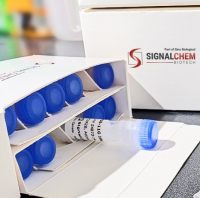Measurement of C3 Fragment Deposition on Cells
互联网
697
Measurement of complement-mediated cytolysis, described in Chapter 5, is the index most frequently used for assessing aspects of complement activation or regulation. However, other consequences of complement activation are probably of more relevance in vivo. Complement plays a major role in enhancing the generation of specific antibodies and provides an interface between the humoral and cellular immune responses (1 –4 ). Complement also increases the binding of phagocytes to target cells by opsonizing the complement activating surface and generates chemoattractants and anaphylatoxins to recruit nearby phagocytes (5 ,6 ). Through these mechanisms, complement not only provides a first line defence against invading pathogens but also acts as the glue that holds the major components of the immune system together. These opsonic, chemoattractant, and anaphylactic activities are largely properties of C3 (and C5) activation fragments. Furthermore, large amounts of C3 fragments can be deposited on the surface of cells without causing significant amounts of lysis. Measurement of C3-deposition is therefore a more sensitive and probably more relevant indicator of complement activation than measurement of cytolysis.









